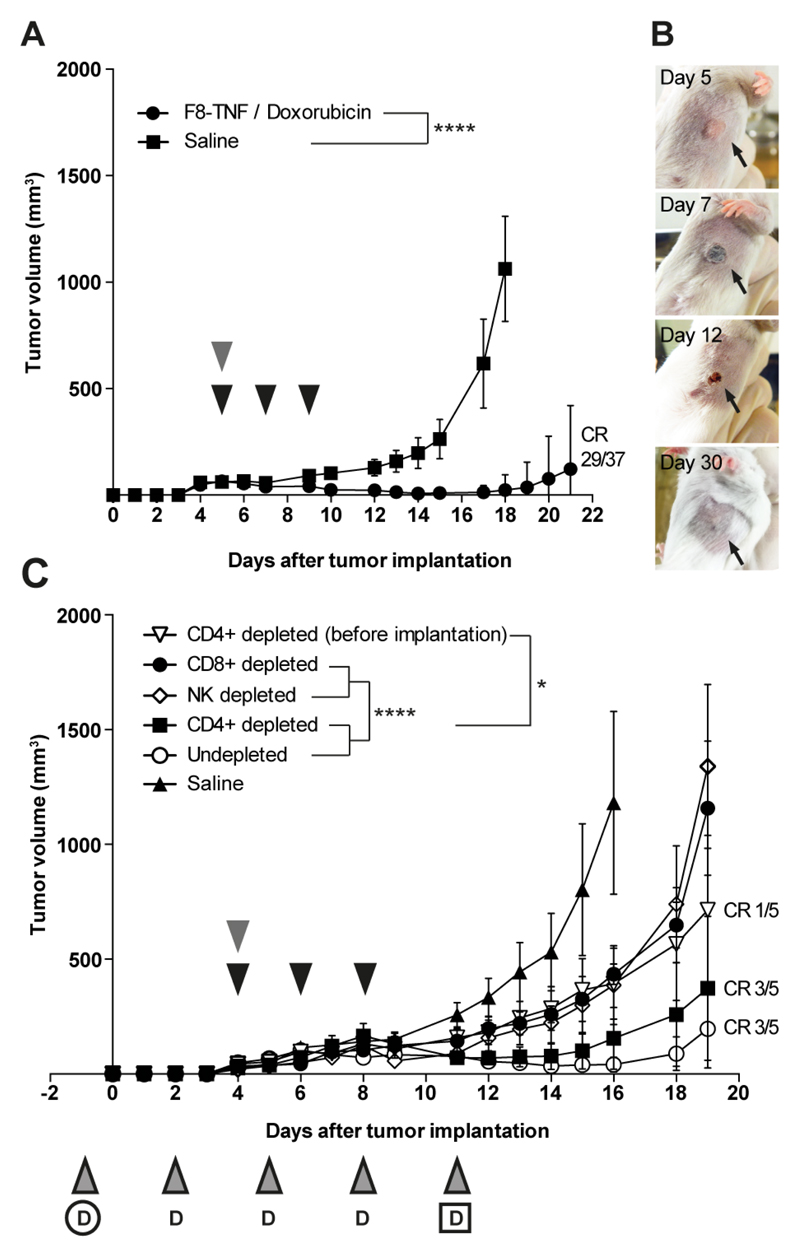Fig. 1. Therapeutic activity of the F8-TNF/doxorubicin combination against subcutaneous murine WEHI-164 fibrosarcoma and in vivo depletion of NK cells, CD4+ T cells and CD8+ T cells.
(A) Mice were challenged with 3x106 WEHI-164 tumor cells and treatment was started when tumors reached a size of approximately 75 mm3. Mice were randomly grouped and received a single injection of 5 mg/kg doxorubicin (grey arrow) and three injections of 2 μg F8-TNF (black arrow) intravenously into the lateral tail vein (n = 37). Saline was used as negative control (n = 5). CR = complete response, **** = p < 0.0001 (regular two-way ANOVA test with the Bonferroni post-test). Data represent mean tumor volumes (± SEM). (B) Representative images of a treated mouse and tumor regression during therapy at days 5, 7, 12 and 30 after tumor implantation. (C) WEHI-164 tumor bearing mice were treated with the F8-TNF/doxorubicin combination. Depletion antibodies were administered on days 2, 5, 8 and 11 (grey arrows, square) after tumor implantation. One group was included where CD4+ T cells were depleted on days -1, 2, 5 and 8 (circle, grey arrows). A saline treated negative control group and an undepleted, F8-TNF/doxorubicin treated positive control group were included. Data represent mean tumor volumes (± SEM), n = 5 mice per group. CR = complete response, * = p < 0.05, **** = p < 0.0001 (regular two-way ANOVA test with the Bonferroni post-test).

